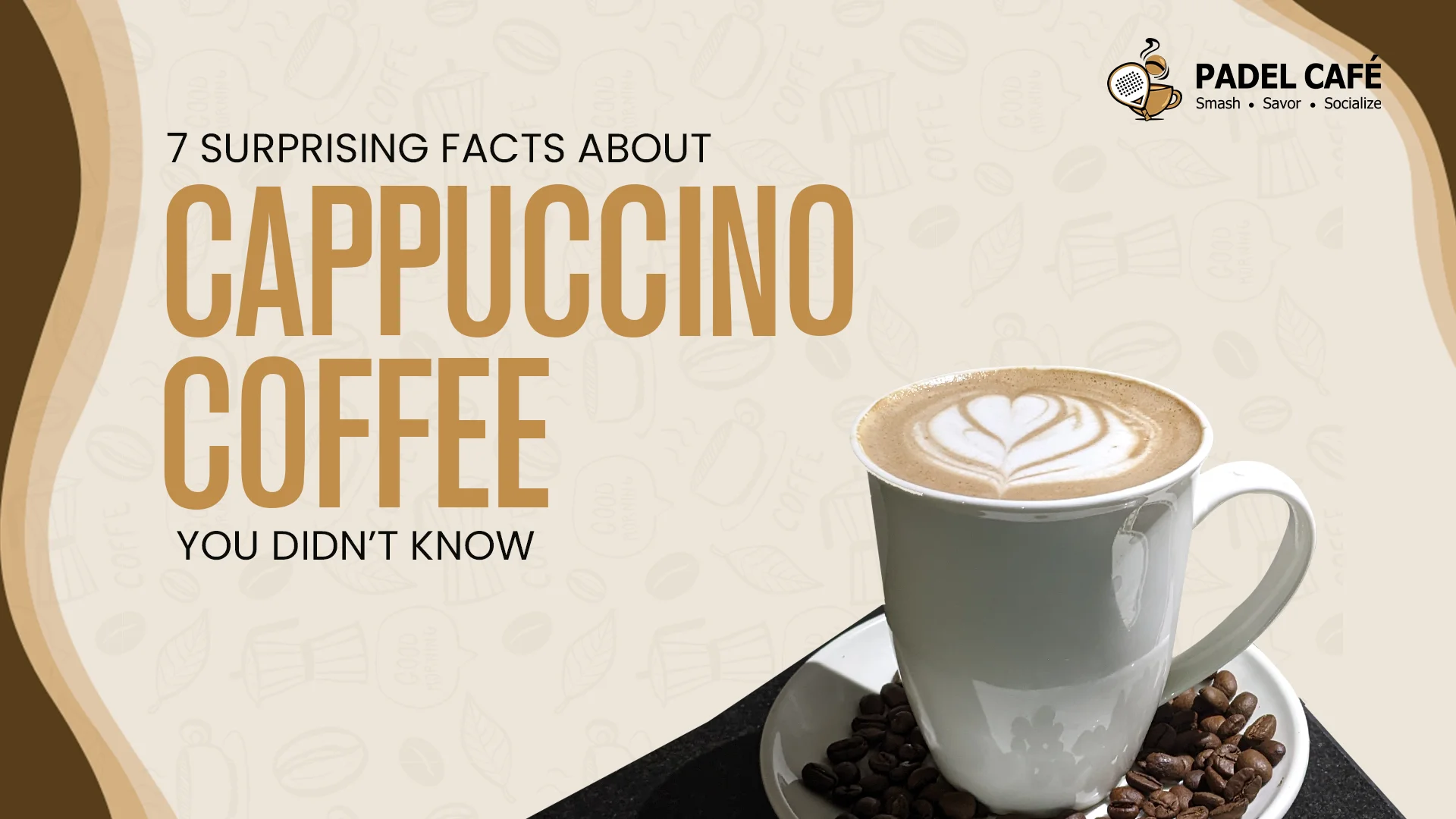What is a Cappuccino?
Cappuccino is one of the several types of coffee, a classic Italian beverage, loved and consumed by many in the present world. A little different from normal coffee, a cup of cappuccino has now become a go-to dose to kickstart the day. It’s not just a delicious mix of coffee, milk, and foam; it has a rich history and interesting qualities.
Whether you’re a cappuccino enthusiast or just starting to explore the world of coffee, here are seven surprising facts about this beloved beverage that make you appreciate it even more.
7 Surprising Facts About Cappuccino
Let’s explore a bit about this favorite coffee beverage — cappuccino.
1. Cappuccino has an Austrian Origin.
Significantly popular in Italy, cappuccino does not have its origin in Italy. This coffee drink is actually Austrian-based. Its ancestor, known as “Kapuziner” is a mocha coffee. The Austrian soldiers brought this hot beverage to Italy, where its popularity increased by leaps and bounds among the local population.
2. Cappuccino is Named After a Group of Monks.
Have you ever wondered about how the term ‘Cappuccino’ was coined? The term “cappuccino” is tied to a group of monks known as the Capuchin friars (or Frati Cappuccini in Italian). The term means “little hood,” referring to the hoods worn by the friar priests. But here’s the weird twist—capuchin monkeys were also named after these friar priests due to the monkeys’ “hairy hood” appearance. So, next time you sip a cappuccino, remember you’re drinking something named after a monk’s robe and a monkey’s head. The drink’s history is surprisingly a wild mix of religion, fashion, and zoology.
3. The Ideal Cappuccino Temperature Breaks Food Safety Rules.
The ideal serving temperature for espresso-based drinks, such as cappuccino, is typically between 149°F–158°F (65°C–70°C). However, this temperature exceeds food safety guidelines, which recommend that hot beverages be served at 65°C (149 °F). Cappuccino temperatures above the recommended threshold can cause immediate injury to the mouth and throat.
4. NASA Astronauts took Cappuccino in Space.
To much surprise, cappuccino has successfully crossed the boundaries of the planet Earth and made its way to outer space. NASA scientists collaborated with the Italian coffee brand Lavazza and the Italian Space Agency to create the ISSpresso machine. The machine takes pride in being the first ever installed coffee machine in the International Space Station. It does not brew a cappuccino, but makes espresso, the base of a cappuccino coffee. Cristoforetti famously became the first person to drink a cappuccino in space in 2015.
5. Cappuccino Has Less Caffeine Than Drip Coffee.
Despite its strong espresso coffee flavor, a cappuccino has less quantity of caffeine compared to a regular drip coffee. Since a cappuccino only contains one part of espresso (coffee) out of the total of three parts, the caffeine amounts average to about 76 mg (for an 8-oz cup). In contrast, in an 8-oz cup of regular drip coffee, the caffeine amounts range between 95-200 mg.
Wonder why?
The drip coffee has a longer brewing time, using more ground coffee. Cappuccino, on the other hand, is known for its creamy, milky, indulgent taste and texture. This creamy milk-coffee blend dilutes the caffeine even more.
6. Ordering a Cappuccino Afternoon in Italy Can Get You Side-Eyed.
Per general observation, cappuccinos are often enjoyed in the morning. In Italy, it’s customary to drink cappuccino in the morning, usually with breakfast. Most Italians believe that milk-based coffees are too heavy to enjoy after meals, leaving one feeling bloated.
On the contrary, it’s also true that cappuccinos on the menus are there, and cafes around the globe serve them throughout the day. However, most of the Italians still adhere to the traditional practice and do not prefer consuming this hot beverage after 11:00 am in the morning. For a cappuccino enthusiast, following this traditional practice can help to fully enjoy the drink’s flavor profile without hurting your stomach.
7. The Frothing Style in Cappuccino Carries Much Significance.
It’s a known surprise that the quality of the cappuccino differs as we speak of the different places serving it. This difference is primarily because of the differing quality of the milk frothing that’s added during its making.
You have two main methods to create this milk frothing: manual and automatic frothing. Manual frothing involves using a steam wand, giving more control over the texture and temperature of the milk. On the other hand, automatic frothing machines do the job with ease, creating foam with the push of a button. The style you choose can affect the richness of the cappuccino and the overall coffee experience.
What Sets Cappuccinos Apart from Other Coffee Types?
One important question to ask is: Why do we prefer cappuccinos over normal coffee types? Well, let’s answer this question:
1. Unique Composition
Cappuccinos are carefully crafted with equal parts espresso, steamed milk, and milk foam. This balanced trio creates a rich, velvety texture, differentiating it from other coffee drinks like lattes or macchiatos.
2. Foam Texture
The dense, airy foam on top of a cappuccino is its hallmark. Unlike lattes, which have more milk and less foam, cappuccinos offer a thicker, creamier top layer that enhances flavor, texture and presentation.
3. Flavor Profile
Cappuccinos deliver a strong coffee flavor with a creamy and subtly sweet profile. The limited milk content maintains the slight boldness of the espresso throughout without being overwhelmed.
4. Serving Size and Style
Cappuccinos, served in traditional standard cups (of around 180–200 ml), are slightly more concentrated than regular coffee. Often dusted with cocoa or cinnamon, they offer a more indulgent, dessert-like experience than other coffee types.
Final Words
Cappuccino is more than just a cup of coffee; it’s a delightful experience steeped in tradition and flavor. Just like there’s the art of brewing coffee, there’s an art of making a perfect cup of cappuccino. By understanding its Italian roots, its perfect ratio, and the importance of foam, you can appreciate every sip of a perfectly made cappuccino even more. Whether you enjoy it in the morning or customize it to your liking, the cappuccino remains one of the most beloved drinks worldwide.



0 Comments